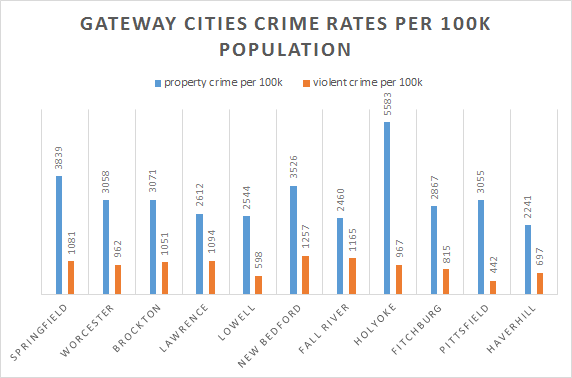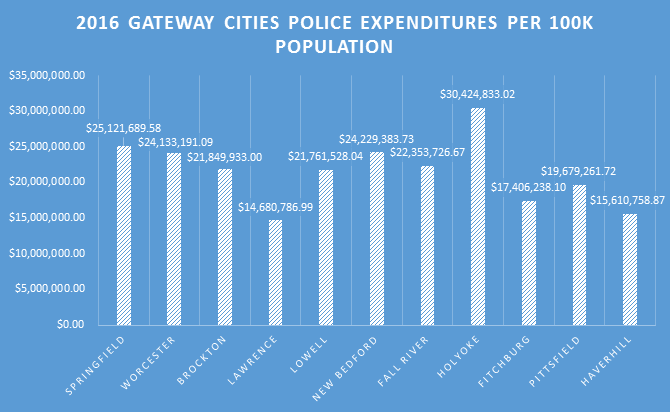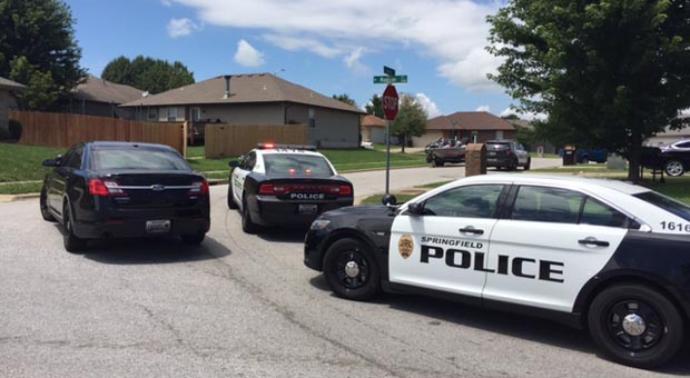The Link Between Police Spending and Crime in Gateway Cities
Massachusetts “Gateway Cities” were defined in a 2007 Massachusetts Institute for a New Commonwealth (MassINC) and Brookings Institution report as midsize cities throughout the Commonwealth that historically had strong economies centered around manufacturing, but have since struggled with unemployment, crime rates, educational performance, and property values as a result of shifting economic trends.
The original eleven Gateway cities were Brockton, Fall River, Fitchburg, Haverhill, Holyoke, Lawrence, Lowell, New Bedford, Pittsfield, Springfield, and Worcester. Section 3A of Chapter 23A of the General Laws of Massachusetts defines a Gateway City as, “a municipality with a population greater than 35,000 and less than 250,000 with a median household income below the Commonwealth’s average and a rate of educational attainment of a bachelor’s degree or above that is below the Commonwealth’s average.”
Using Massanalysis.com, a free government transparency tool provided by Pioneer Institute, a report was generated with a few clicks to compare crime rates and police expenditures across the original eleven Gateway Cities.
As demonstrated by the graph below, Holyoke had the highest rate of property crime by a significant margin, followed by Springfield and New Bedford. Haverhill, Fall River, and Lowell had the lowest incidence of property crimes. New Bedford had the highest violent crime rate, trailed closely by Fall River and Springfield. Pittsfield, Lowell, and Haverhill had the lowest incidence of violent crimes.

Police expenditures across the Gateway Cities (shown in the graph below) followed the same trend. Holyoke and Springfield had the highest costs, which can be explained by the particularly high property crime rate in Holyoke, and Springfield having the second and third highest property and crime rates, respectively. Haverhill, which had the lowest property crime rate and third lowest violent crime rate, had the second lowest costs. Lawrence is the only outlier, as it had the lowest costs but fell in the middle of the curve for both categories.

The research begets the question; at what point does increasing police costs and presence lead to lower crime rates?
For more analysis of Massachusetts communities, visit Massanalysis.com, where you can use our tools to benchmark how your city or town is doing across a number of different measures.



